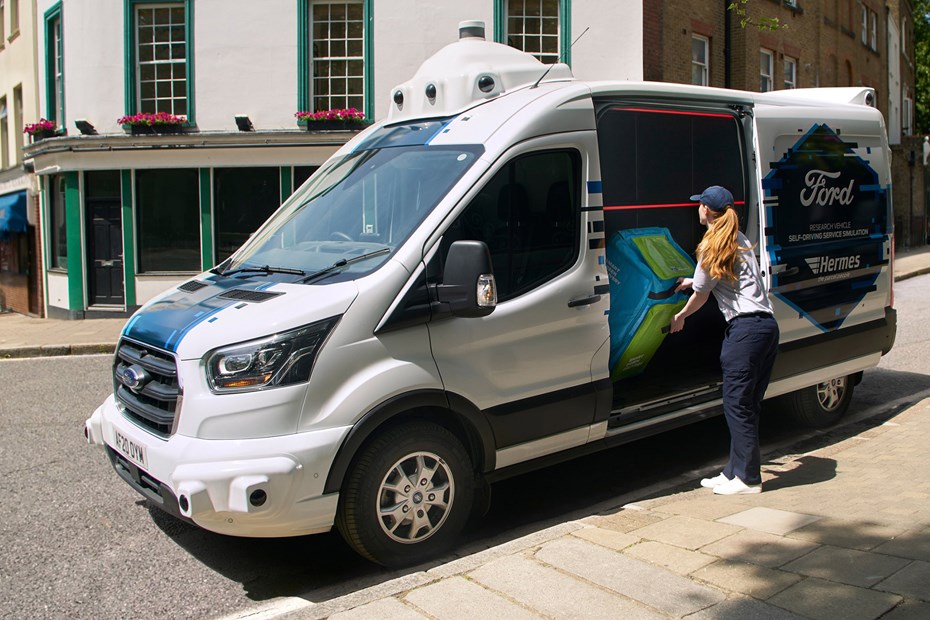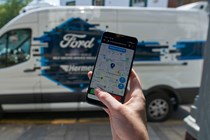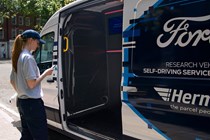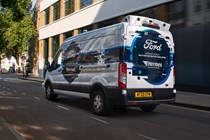It’s not just Volkswagen that’s exploring the future of self-driving vans, Ford is spending plenty of money investigating the same subject. Both firms have invested in Argo AI, a tech firm dedicated to developing autonomous vehicles, but Ford is taking a slightly different approach with its European Self-Driving Vehicle Research Programme.
Which is to say the Blue Oval has built a Ford Transit that looks like a self-driving vehicle, but actually isn’t. All in the name of studying how other road users react to the presence of an apparently driverless van.
In fact, there is a driver onboard. But they’re disguised as a seat.
No. Really.
>> Sign-up for the Parkers Vans and Pickups newsletter
So this is not a self-driving Transit van?
Nope. It’s just covered in sensors in a way that’s supposed to make it look like an autonomous Transit.
In control of the vehicle is what Ford refers to as a ‘Human Car Seat’ – which really is a person dressed as a seat.

The picture above is from a previous Ford Human Car Seat experiment, but you get the idea.
To the causal eye, it will look like no-one is driving the van, allowing Ford’s research team to gauge real-world reaction to an autonomous deliver vehicle that is actually fully under human command at all times.
Making things more realistic, Ford is lending the thing out to courier companies – including a two-week trial with Hermes in the UK.
If it’s pretending it doesn’t have a driver, how do any parcels get delivered?
The delivery van’s job is being supported by ‘pedestrian couriers’, who have a smartphone app that allows them to hail the pseudo-autonomous Transit and remotely unlock the doors.
Once it’s safely stopped, they then climb in the back and follow ‘voice prompts and digital screens’ to lockers that hold the items they need to deliver.
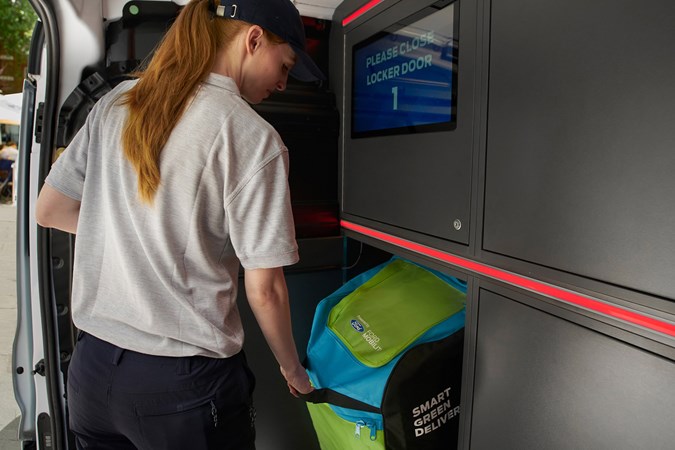
Ford has already held pedestrian-based last mile delivery trials in London, so is aware how this aspect of the project is likely to go. What’s new is the chance to observe the foot-bound couriers’ interaction with the apparently driverless van.
In other words, it’s not just road users that are being experimented on here – Ford and Hermes are also trying to work out the wider impact on this kind of business.
And this will lead to fully autonomous vans in the future, will it?
Possibly. Ford will have invested around $7 billion (about £5 billion) into self-driving technology over a 10-year period by the time 2025 rolls around. If money talks, that’s reasonably loud chatter.
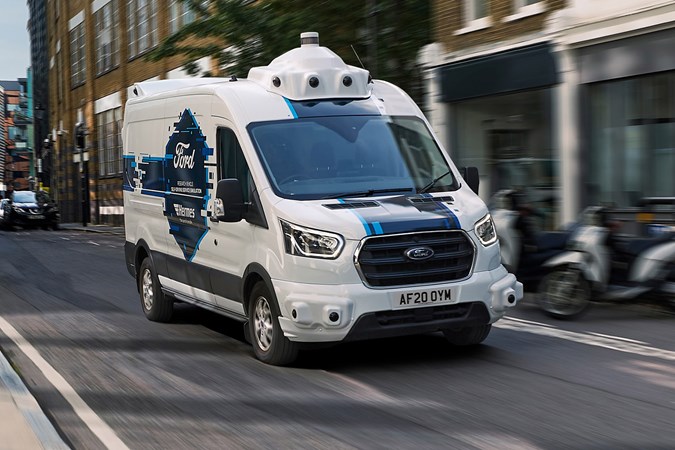
Together with Argo AI, it already has autonomous test vehicles operating in six cities in the USA, with some door-to-door driverless deliver tasks already carried out in Miami, Florida.
With Volkswagen planning to have a fully autonomous ride-hailing service operating in Hannover by 2025, this stuff really does seem to be coming…
Watch the fake driverless Transit in action in this official video:
Also read:
>> Self-driving vans are coming as VW confirms ‘robotaxi’ plans for 2025
>> New British-built Arrival electric van: in-depth detail
>> Ford and VW global alliance to build vans and pickups – latest details
Just so you know, we may receive a commission or other compensation from the links on this website - read why you should trust us.


